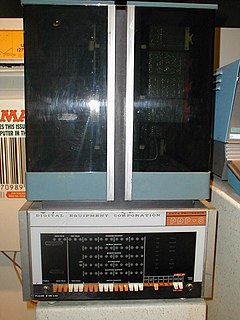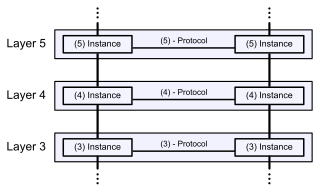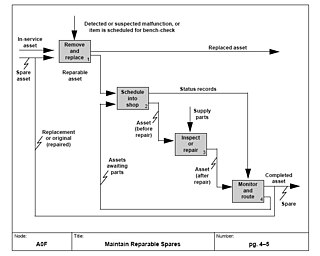Related Research Articles

Nokia Bell Labs, originally named Bell Telephone Laboratories (1925–1984), then AT&T Bell Laboratories (1984–1996) and Bell Labs Innovations (1996–2007), is an American industrial research and scientific development company owned by multinational company Nokia. With headquarters located in Murray Hill, New Jersey, the company operates several laboratories in the United States and around the world.

Digital Equipment Corporation, using the trademark Digital, was a major American company in the computer industry from the 1960s to the 1990s. The company was co-founded by Ken Olsen and Harlan Anderson in 1957. Olsen was president until forced to resign in 1992, after the company had gone into precipitous decline.

The Federal Bureau of Investigation (FBI) is the domestic intelligence and security service of the United States and its principal federal law enforcement agency. Operating under the jurisdiction of the United States Department of Justice, the FBI is also a member of the U.S. Intelligence Community and reports to both the Attorney General and the Director of National Intelligence. A leading U.S. counterterrorism, counterintelligence, and criminal investigative organization, the FBI has jurisdiction over violations of more than 200 categories of federal crimes.

The history of the Internet has its origin in information theory and the efforts of computer scientists around the world to build and interconnect computer networks. The Internet Protocol Suite arose from research and development in the United States and involved international collaboration, particularly with researchers in the United Kingdom and France.

A minicomputer, or colloquially mini, is a class of smaller general purpose computers that developed in the mid-1960s and sold at a much lower price than mainframe and mid-size computers from IBM and its direct competitors. In a 1970 survey, The New York Times suggested a consensus definition of a minicomputer as a machine costing less than US$25,000, with an input-output device such as a teleprinter and at least four thousand words of memory, that is capable of running programs in a higher level language, such as Fortran or BASIC.

The Open Systems Interconnection model is a conceptual model that 'provides a common basis for the coordination of [ISO] standards development for the purpose of systems interconnection'. In the OSI reference model, the communications between a computing system are split into seven different abstraction layers: Physical, Data Link, Network, Transport, Session, Presentation, and Application.

The PDP-11 is a series of 16-bit minicomputers sold by Digital Equipment Corporation (DEC) from 1970 into the 1990s, one of a set of products in the Programmed Data Processor (PDP) series. In total, around 600,000 PDP-11s of all models were sold, making it one of DEC's most successful product lines. The PDP-11 is considered by some experts to be the most popular minicomputer.

In telecommunications, packet switching is a method of grouping data into packets that are transmitted over a digital network. Packets are made of a header and a payload. Data in the header is used by networking hardware to direct the packet to its destination, where the payload is extracted and used by an operating system, application software, or higher layer protocols. Packet switching is the primary basis for data communications in computer networks worldwide.

The Defense Information Systems Agency (DISA), known as the Defense Communications Agency (DCA) until 1991, is a United States Department of Defense (DoD) combat support agency composed of military, federal civilians, and contractors. DISA provides information technology (IT) and communications support to the President, Vice President, Secretary of Defense, the military services, the combatant commands, and any individual or system contributing to the defense of the United States.

The Advanced Research Projects Agency Network (ARPANET) was the first wide-area packet-switched network with distributed control and one of the first networks to implement the TCP/IP protocol suite. Both technologies became the technical foundation of the Internet. The ARPANET was established by the Advanced Research Projects Agency (ARPA) of the United States Department of Defense.

Battelle Memorial Institute is a private nonprofit applied science and technology development company headquartered in Columbus, Ohio. Battelle is a charitable trust organized as a nonprofit corporation under the laws of the State of Ohio and is exempt from taxation under Section 501(c)(3) of the Internal Revenue Code because it is organized for charitable, scientific and education purposes.
iconectiv is a supplier of network planning and network management services to telecommunications providers. Known as Bellcore after its establishment in the United States in 1983 as part of the break-up of the Bell System, the company's name changed to Telcordia Technologies after a change of ownership in 1996. The business was acquired by Ericsson in 2012, then restructured and rebranded as iconectiv in 2013.
The Traffic Service Position System (TSPS) was developed by Bell Labs in Columbus, Ohio to replace traditional cord switchboards. The first TSPS was deployed in 1969 and used the Stored Program Control-1A CPU, "Piggyback" twistor memory and Insulated Gate Field Effect Transistor solid state memory devices similar to dynamic random access memory.

Fort Monmouth is a former installation of the Department of the Army in Monmouth County, New Jersey. The post is surrounded by the communities of Eatontown, Tinton Falls and Oceanport, New Jersey, and is located about five miles (8.0 km) from the Atlantic Ocean. The post covers nearly 1,126 acres (4.56 km2) of land, from the Shrewsbury River on the east, to Route 35 on the west; this area is referred to as 'Main Post'. A separate area to the west includes post housing, a golf course, and additional office and laboratory facilities. A rail line, owned by Conrail, runs through Camp Charles Wood and out to Naval Weapons Station Earle. The post is like a small town, including a Post Exchange (PX), health clinic, gas station and other amenities. Until the September 11, 2001 terrorist attacks the post was open to the public to drive through; after that time, the post was closed to all but authorized personnel. The main road through the fort was reopened to the public in 2017.

IDEF0, a compound acronym, is a function modeling methodology for describing manufacturing functions, which offers a functional modeling language for the analysis, development, reengineering and integration of information systems, business processes or software engineering analysis.
Trunks Integrated Record Keeping System (TIRKS) is an operations support system from Telcordia Technologies, originally developed by the Bell System during the late 1970s. It was developed for inventory and order control management of interoffice trunk circuits that interconnect telephone switches. It grew to encompass and automate many functions required to build the ever-expanding data transport network. Supporting circuits from POTS and 150 baud modems up through T1, DS3, SONET and DWDM, it continues to evolve today, and unlike many software technologies today, provides complete backward compatibility. TIRKS was recently updated with a Java GUI, XML API, and WORD Sketch, which provides graphical views of the TIRKS Work Order Record and Details Document as well as SONET and DWDM networks. When TIRKS became a registered trademark in 1987, it became technically improper to use it as an acronym. TIRKS was one of many OSS technologies transferred to Bell Communications Research as part of the Modification of Final Judgment related to the AT&T divestiture on January 1, 1984. In the 1990s, the Facility and Equipment Planning System (FEPS) and Planning Workstation System (PWS) products were incorporated into the Telcordia TIRKS CE System. TIRKS is still in use at AT&T, Verizon, CenturyLink/Lumen Technologies, and altafiber.
The Switching Control Center System was an operations support system developed by Bell Laboratories and deployed during the early 1970s. This computer system was first based on the PDP-11 product line from Digital Equipment Corporation and used the CB Unix operating system and custom application software and device drivers that were developed and maintained by Bell Labs in Columbus, Ohio USA. SCCS was ported to the AT&T 3B20 and 3B5 computers running UNIX System V Release 2 in the early 1980s.

In computing, a firewall is a network security system that monitors and controls incoming and outgoing network traffic based on predetermined security rules. A firewall typically establishes a barrier between a trusted network and an untrusted network, such as the Internet.
Operations support systems (OSS), operational support systems in British usage, or Operation System (OpS) in NTT, are computer systems used by telecommunications service providers to manage their networks. They support management functions such as network inventory, service provisioning, network configuration and fault management.
A long-running debate in computer science known as the Protocol Wars occurred from the 1970s to the 1990s when engineers, organizations and nations became polarized over the issue of which communication protocol would result in the best and most robust computer networks. This culminated in the Internet–OSI Standards War in the late 1980s and early 1990s, which was ultimately "won" by the Internet protocol suite ("TCP/IP") by the mid-1990s and has since resulted in most other protocols disappearing.
References
- ↑ Commission, United States Federal Communications (1978). Federal Communications Commission Reports. V. 1-45, 1934/35-1962/64; 2d Ser., V. 1- July 17/Dec. 27, 1965-. Federal Communications Commission. pp. 118, 308–310.
- ↑ Jacobs, Stuart (2013-12-16). Security Management of Next Generation Telecommunications Networks and Services. John Wiley & Sons. p. 31. ISBN 978-0-470-56513-1.
- ↑ Proceedings of the National Communications Forum. Professional Education International, Incorporated. September 1989. p. 727. ISBN 978-0-933217-05-8.